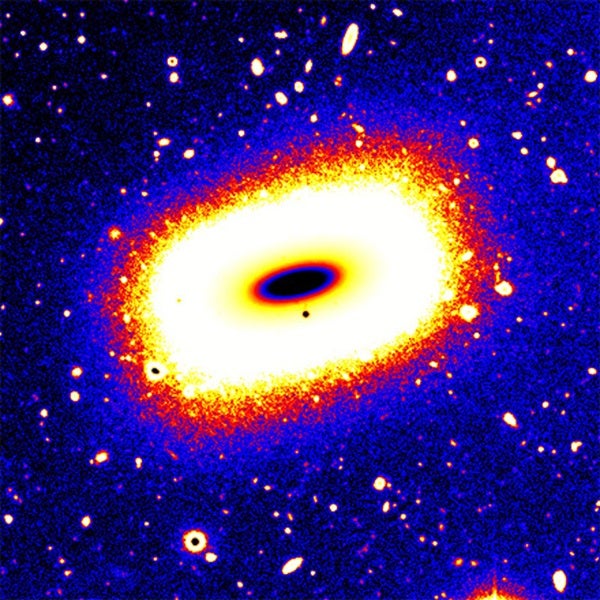Most galaxies in the universe around us exist in one of three forms: ellipsoidal, disk-like — usually in the shape of a flattened circular disk hosting a spiral pattern of stars — or irregular. Dwarf galaxies, probably the most common galaxies in the universe, are small and have low intrinsic brightness, i.e., luminosity. One of the reasons that LEDA 074886 was hard to find is because of its dwarf-like status. It has 50 times less stars than our Milky Way Galaxy, and its distance from Earth is equivalent to that spanned by 700 Milky Way galaxies placed end-to-end.
The combined advantages of Subaru’s large 8.2-meter primary mirror and its camera at prime focus gave the researchers such a wide field of view that they could observe objects beyond their intended targets and make the surprising discovery of the emerald-shaped dwarf galaxy. Additional information gleaned from the use of green, red, and infrared filters, along with the good image quality seeing in the observation, enabled the researchers to see and measure a stellar disk embedded within the rectangular-shaped galaxy. The blue color of the inner disk suggested a younger average age for this stellar population.
The astronomers suspect that the emerald-cut galaxy may resemble an inflated disk seen side-on, like a short cylinder. “One possibility is that the galaxy may have formed out of the collision of two spiral galaxies,” said Duncan Forbes from Swinburne University. “While the pre-existing stars from the initial galaxies were strewn to large orbits creating the emerald-cut shape, the gas sank to the mid-plane, where it condensed to form new stars and the disk that we have observed.”
Despite its apparent uniqueness, partly due to its chance orientation, the team has gathered useful information for modeling other galaxies. While the outer rectangular shape is somewhat like galaxy simulations that don’t involve the production of new stars, the disk-like structure is comparable with simulations involving star formation. “This highlights the importance of combining lessons learned from both types of past simulations for better understanding of galaxy evolution”, said Graham. When our disk-shaped Milky Way Galaxy collides with the disk-shaped Andromeda Galaxy in about 3 to 5 billion years from now, we may become inhabitants of a rectangular-looking galaxy.










